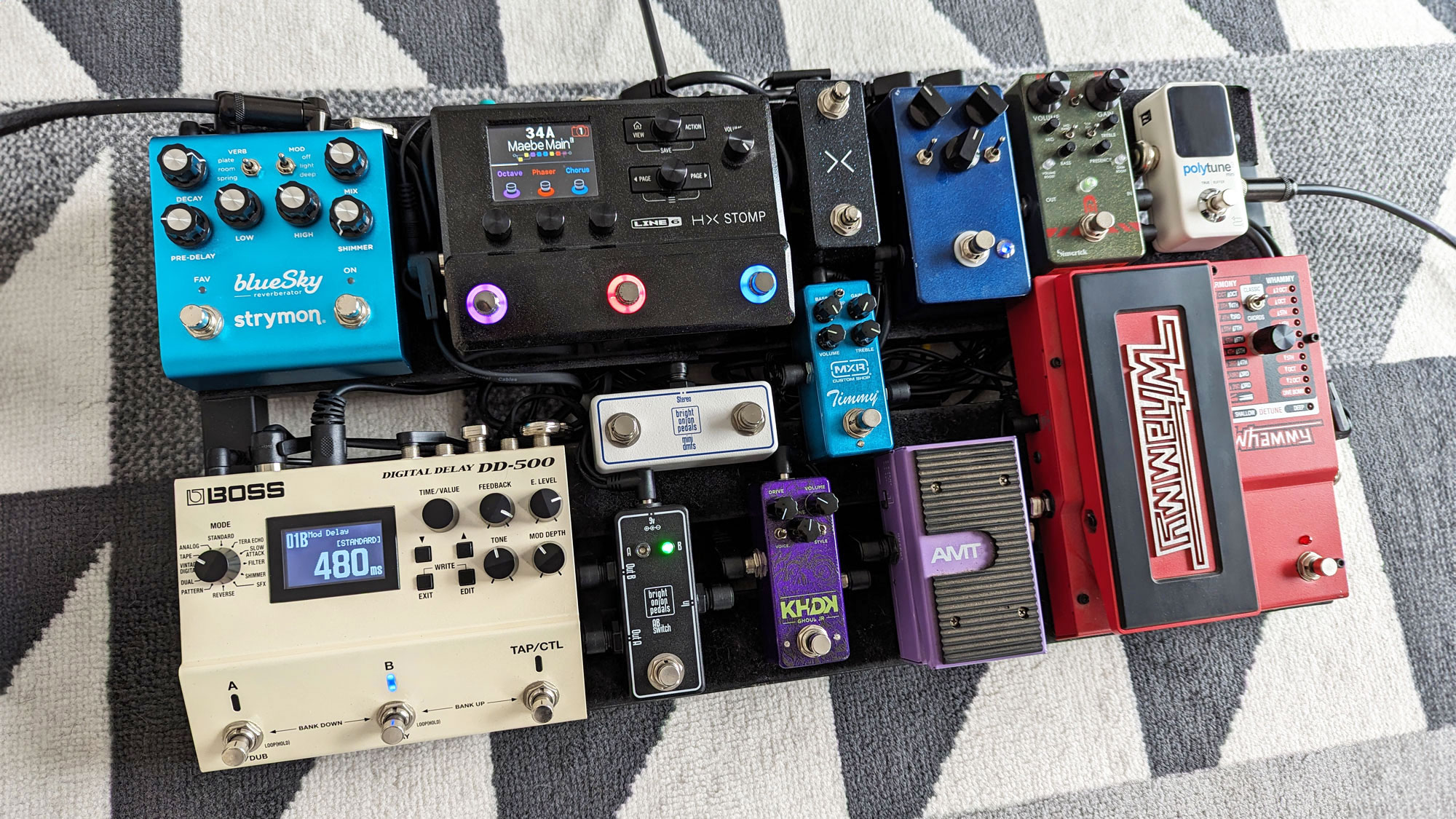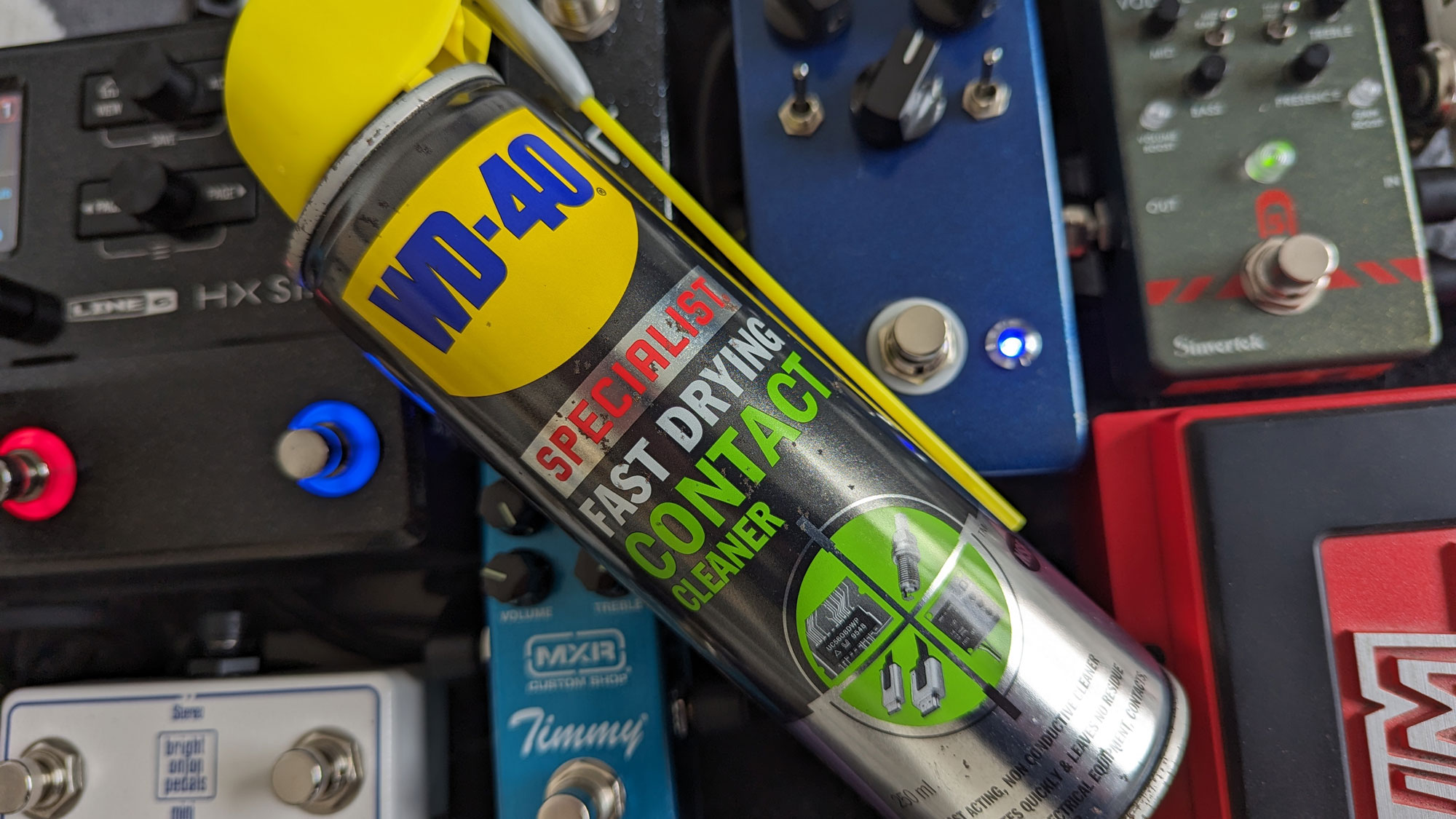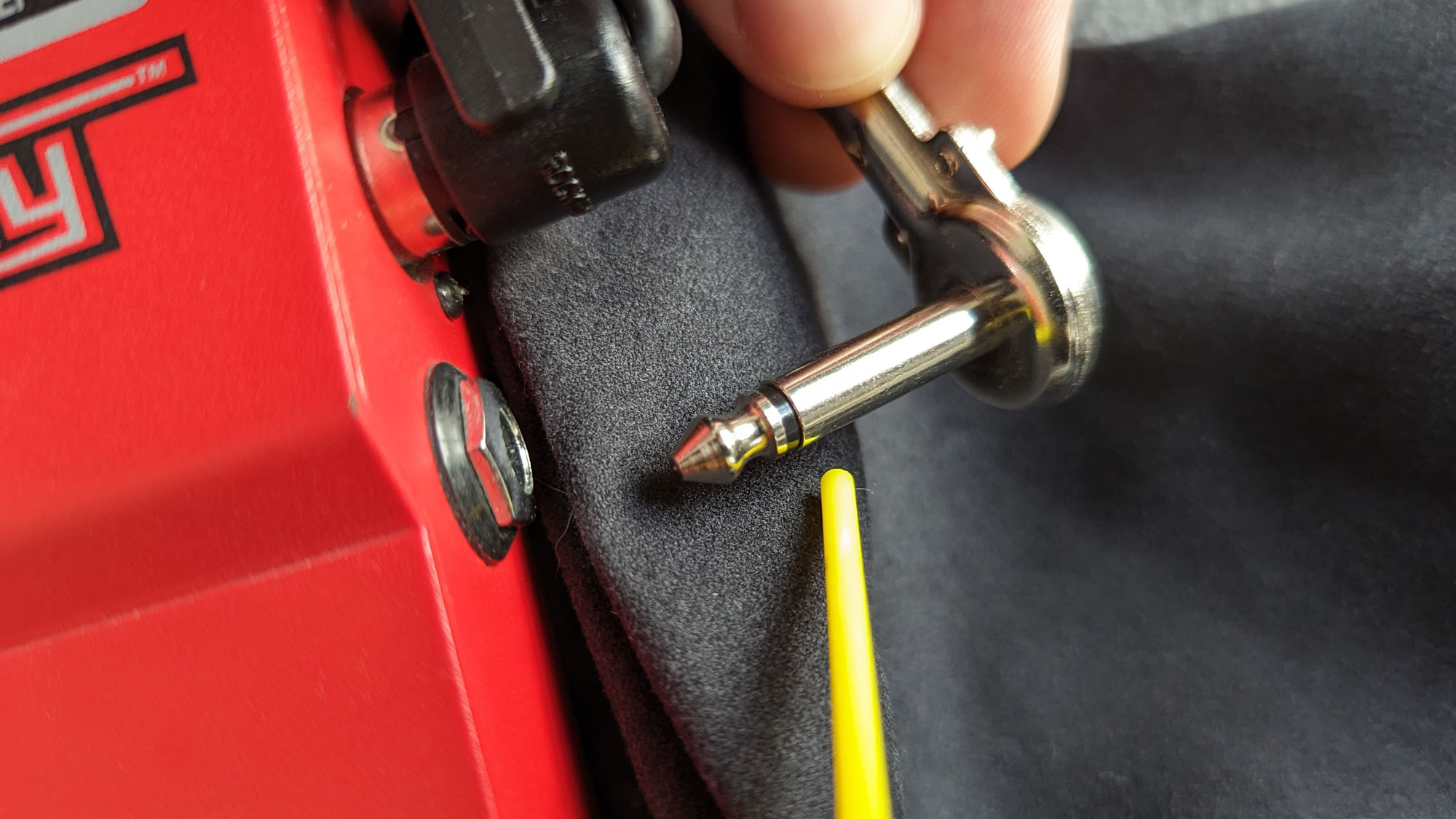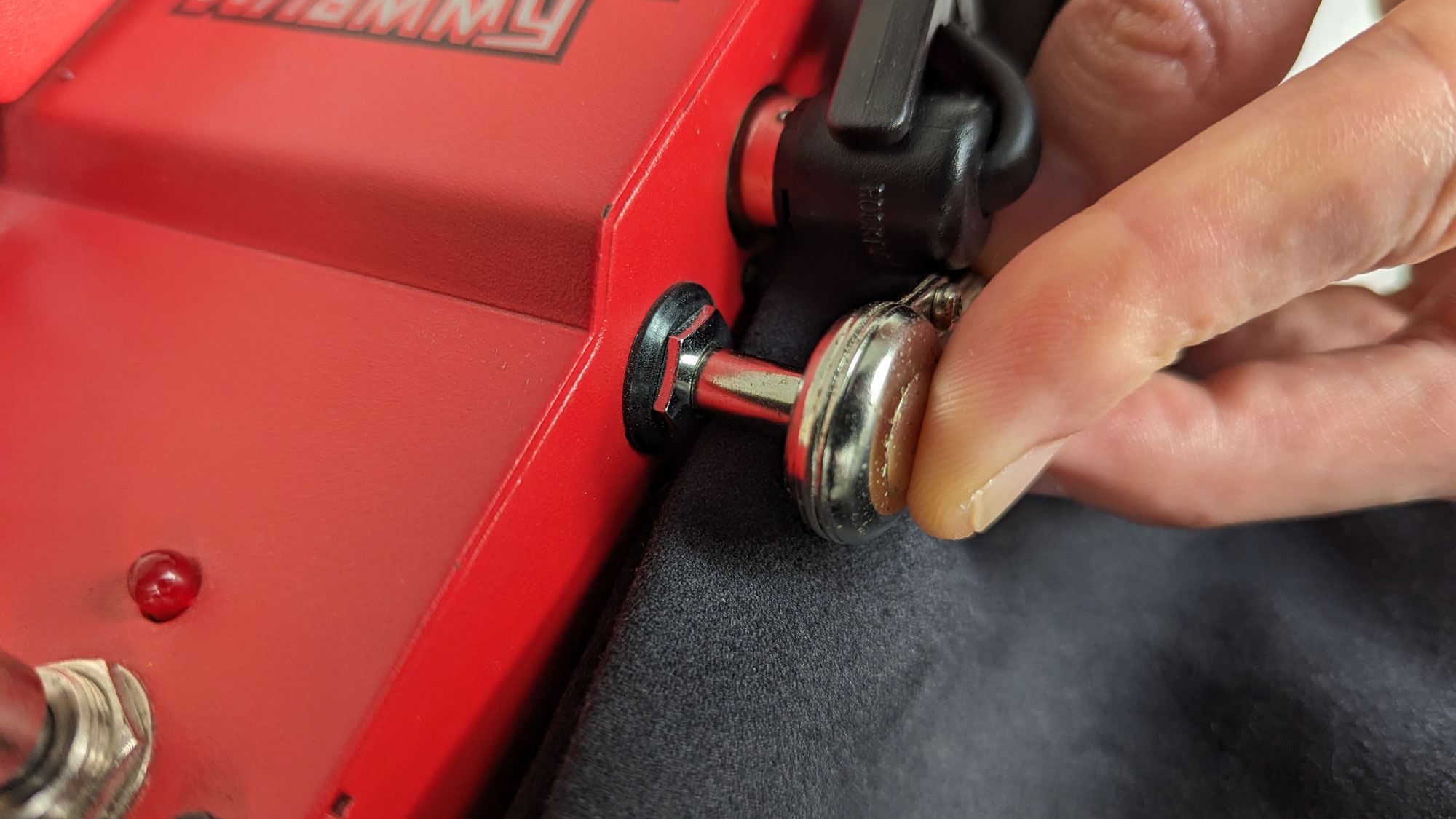
Ever since I bought my first pedalboard over two decades ago, it’s been in constant flux. My very first rig was made up of 10 Boss stompboxes – as was the style at the time – and I went through various permutations of downsizing, upsizing, digital, analog, and everything in between.
Since focusing solely on one musical project, I’ve settled on a more consistent lineup – one that combines the ‘I could really do with this one effect for one song’ utility of Line 6’s HX Stomp with a handful of my favorite drive pedals and my constant companions, the DigTech Whammy (5th Gen, since you asked) and Boss DD-500.
Once I had the layout consistent, bar the odd swap here and there (I’m only human), I got the cabling all fine and dandy, with appropriate lengths zip-tied to the base of my Pedaltrain 2. Basically, I made my ’board Insta-ready. No shame.
Tidying and upgrading my patch cables – not to mention snapping up one of the best pedalboard power supplies on the market, the OneSpot CS12 – didn’t just look better; it quietened my rig no end, too. Unless I was stacking multiple raging gain stages, the hiss levels were whisper-quiet.
But at recent rehearsals – and after some particularly sweaty gigs – I’d noticed a change. Stomps on certain pedals were generating an almighty ‘ker-thunk’ through my rig. And was it my imagination, or was the noise floor louder than it used to be?
After a few suspiciously noisy recordings back at my home studio (read: spare bedroom), I conducted a few tests, stomping on individual pedals and identifying the problem children of my stompbox family. But it wasn’t the footswitches themselves at fault here. During my rigorous testing, a quick wiggle of the suspect pedals’ accompanying patch cables revealed a different diagnosis: a persistent case of the crackly jacks.
Now, I’d wager most of you have dealt with a scratchy guitar jack before. But my pedal sockets had developed a layer of internal dirt and debris because I wasn’t constantly plugging and unplugging them anymore – which would have, in turn, scraped said gunk out. The fact that my tone was suffering because I hadn’t changed my ’board around for a while carried a certain irony for a recovering pedal addict like myself.

So I turned to my most reliable of allies in tackling hiss: trusty old contact cleaner. Pros/forum tonehounds will swear by DeoxIT, but WD40’s cheaper Specialist contact cleaner – which happened to be the one I found rusting away in my toolbox – did the job for me. (For the record, you most definitely should not use regular WD40 for this task, as its lubricated formula runs the risk of making your pedals’ innards even gunkier. You have been warned).
My bone-headed method was to spray the cleaner directly onto the patch cables I was using and then plug and unplug them repeatedly in the problem jacks – and the same goes for power cables, which I also found were also raising the noise floor (just turn the power off first, yeah?).
An alternative approach is to spray a Q-tip or similar and give the jack a good going over. Obviously, you’ll want to use an old cloth to catch any excess spray before it goes all over your valuable hand-painted boutique prizes.


Bar one ropey patch cable that I’ve since replaced (RIP), my incessant plugging cured the rustling and popping that came with everyday pedalboard operation. Huzzah. But more than that, my tinkerings all but removed the underlying noise from my rig.
Now, even when I activate my gainiest fuzz, it’s virtually silent. Stacking it with an overdrive still generates a faint hiss, but even then it’s virtually non-existent compared with the typhoon of noise that went before. The difference was night and day. So much so that I felt compelled to write an entire article about it, which was very much not on my content plan for this month.
So, if your ’board is noisier than you remember, or you haven’t given it a lot of love in recent months, cancel that noise suppressor pedal order, grab hold of those patch cables and give them a good shimmy. They might reveal a suspect jack socket in need of cleaning. Maybe you’ll come across a dud patch cable. But either way, you’ll be en route to a cleaner, healthier, quieter pedalboard.







